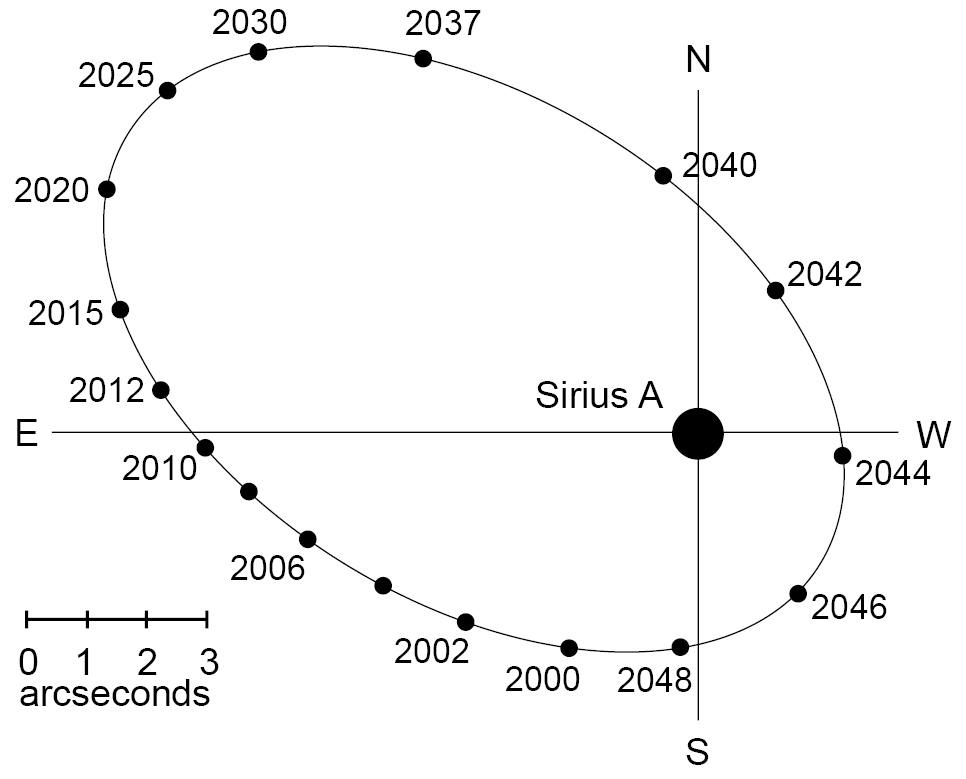 Sirius, the brightest star in the night sky and one of the nearest stars to the Sun, has a faint (8.3-mag.) companion, Sirius B, a white dwarf roughly the size of the Earth but with the mass of the Sun. Although it is often said to be very difficult to see, it can be spotted with a modest (10-cm) telescope. Look for Sirius B east of Sirius A using moderate to high magnification. Observing during twilight reduces the glare of Sirius A, significantly increasing your chances of seeing the companion.
Sirius, the brightest star in the night sky and one of the nearest stars to the Sun, has a faint (8.3-mag.) companion, Sirius B, a white dwarf roughly the size of the Earth but with the mass of the Sun. Although it is often said to be very difficult to see, it can be spotted with a modest (10-cm) telescope. Look for Sirius B east of Sirius A using moderate to high magnification. Observing during twilight reduces the glare of Sirius A, significantly increasing your chances of seeing the companion.Single stars, such as our Sun, are the exception. The majority of stars are double (or multiple) and are gravitationally bound with component suns that move in elliptical orbits around common centres of mass.
Some stars that seem to be located next to one another as seen from Earth, are not physically related and appear double only because of perspective; these are known as “optical doubles”.
Long-term observation of a true double star allows its orbit to be calculated, which in turn provides an opportunity for the masses of the stars to be determined. This knowledge is essential in the testing of theories of stellar evolution.
Visual double stars are among the easiest of all astronomical objects to observe. A well-equipped observatory and large telescope is not required. There are thousands of visual double stars that are within the range of small telescopes. Double stars can also be easily observed from locations suffering from moderate light pollution.
There are many so-called “neglected” double stars that need to be confirmed. The only special instrumentation needed is an eyepiece to which a cross-hair has been fitted. For more serious work, some means of accurately measuring the position angle and angular separation between the two stars is needed.
How to observe double stars
Download the comprehensive double star observing tutorial , written by Chris Middleton and published in MNASSA (2007 April).
Observation of double stars by ASSA members is co-ordinated by the Double and Variable Star Section which maintains an archive of Double Star News and Articles.
